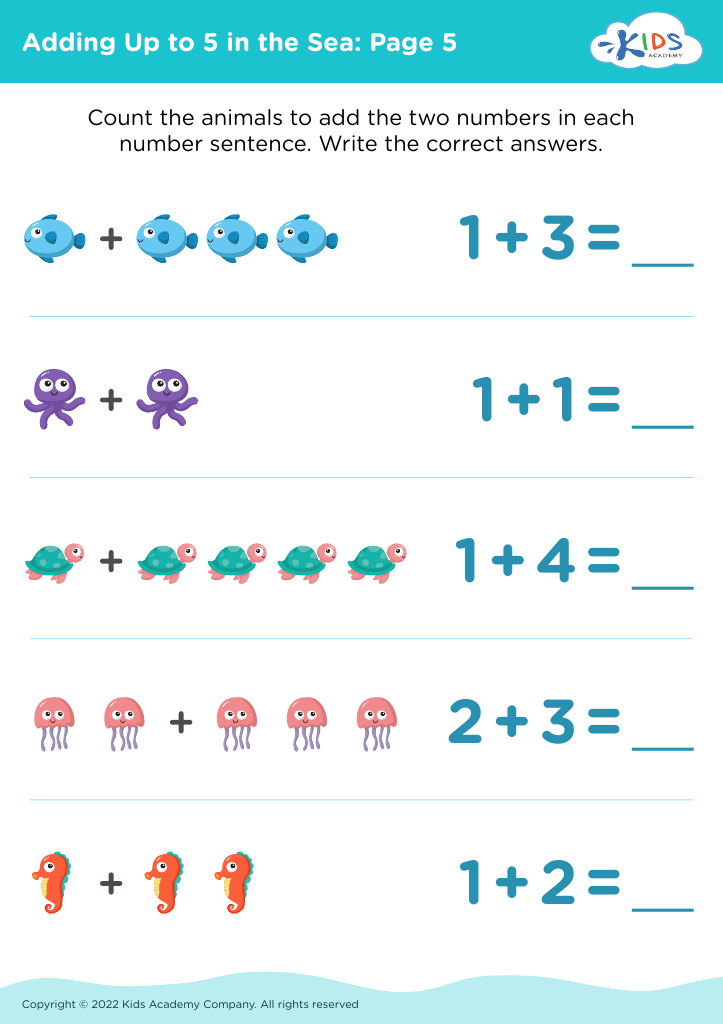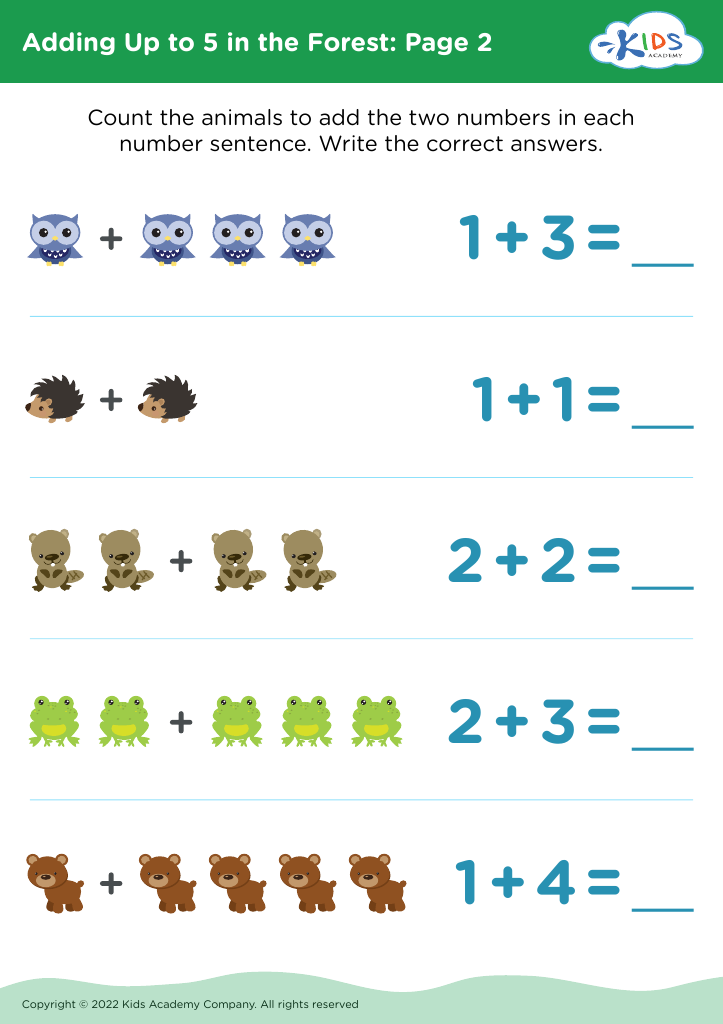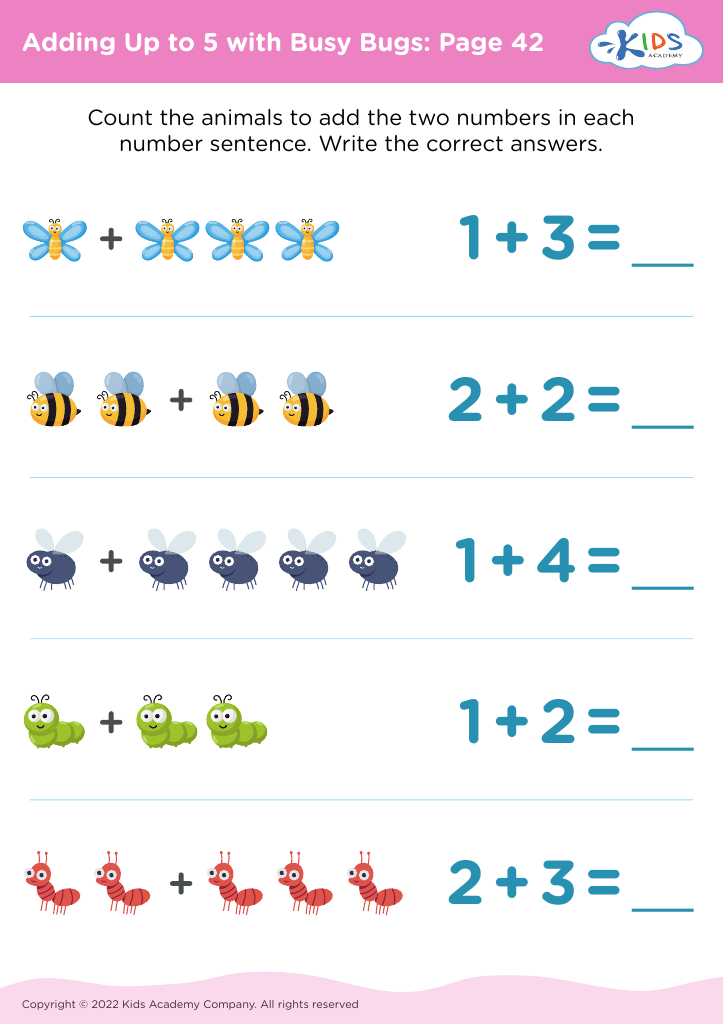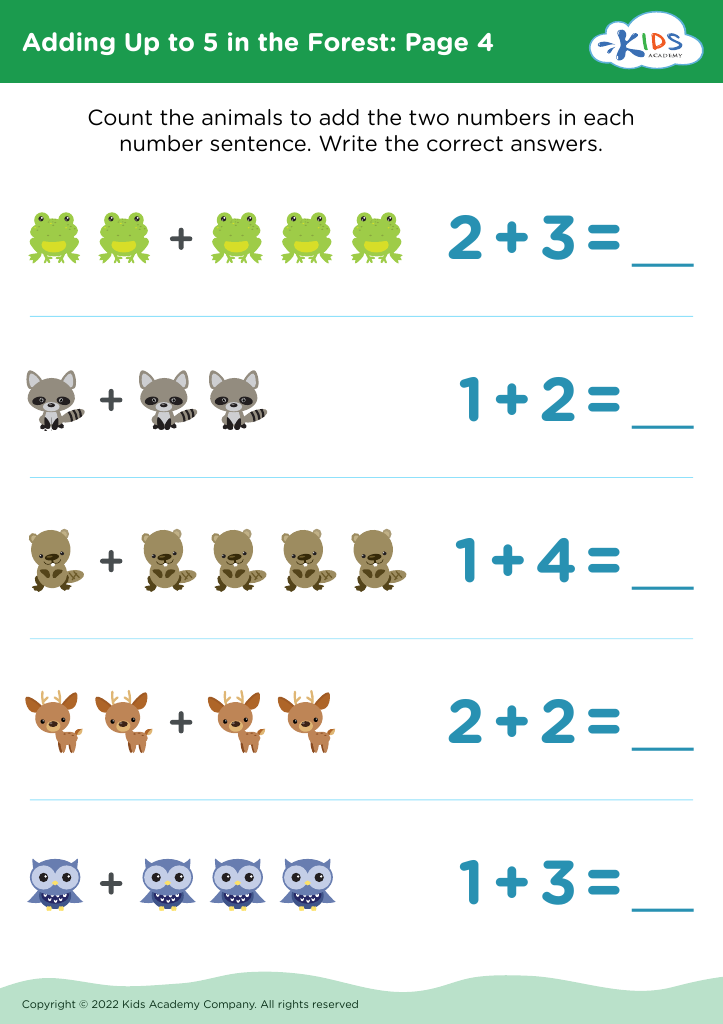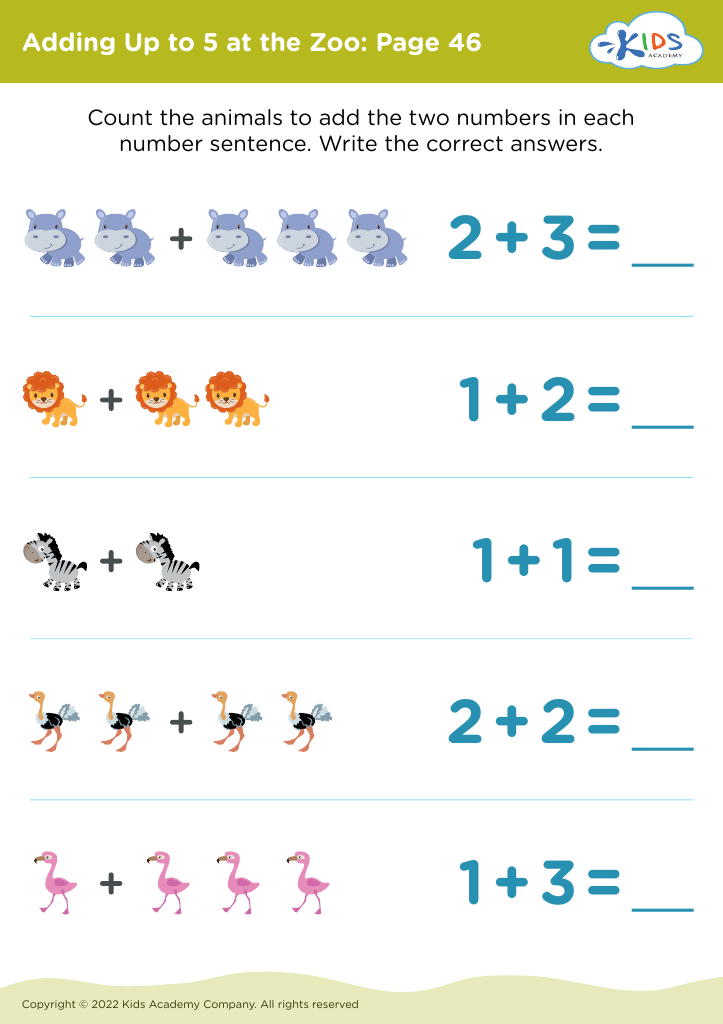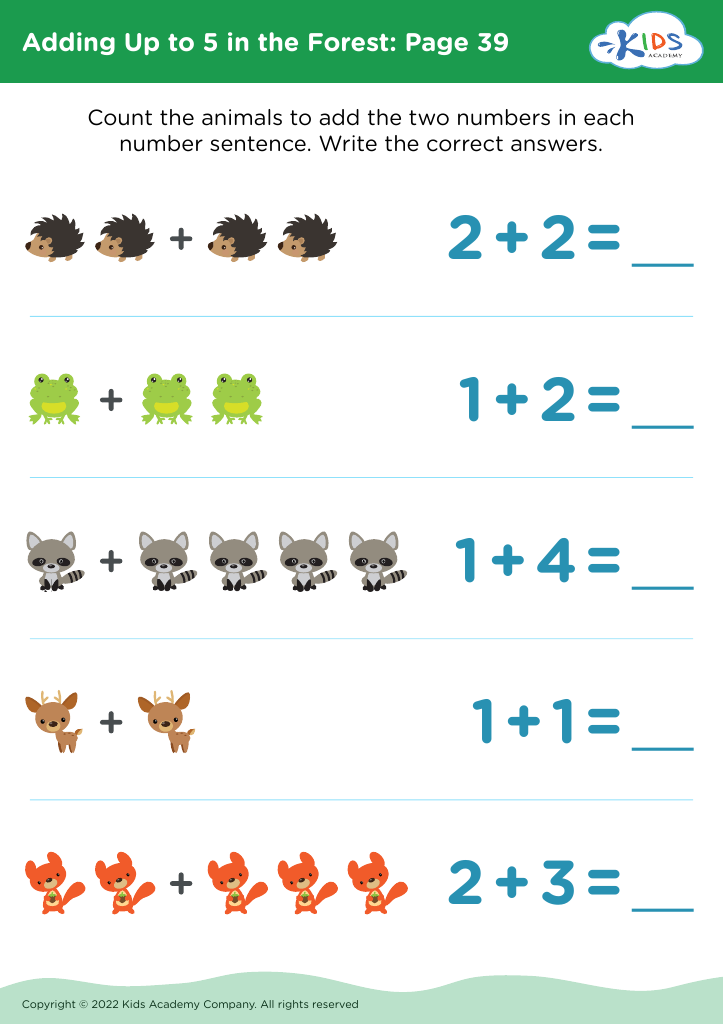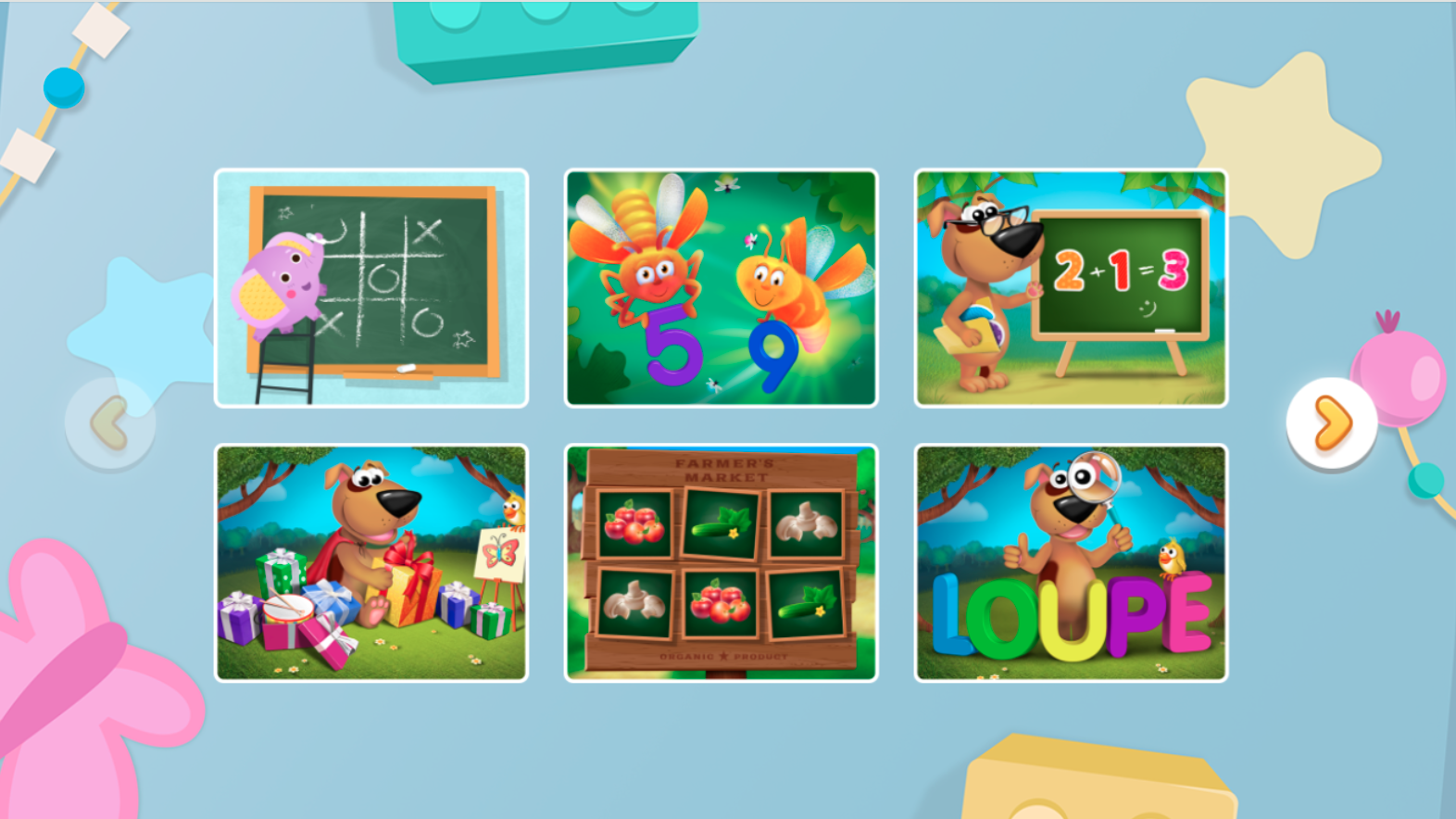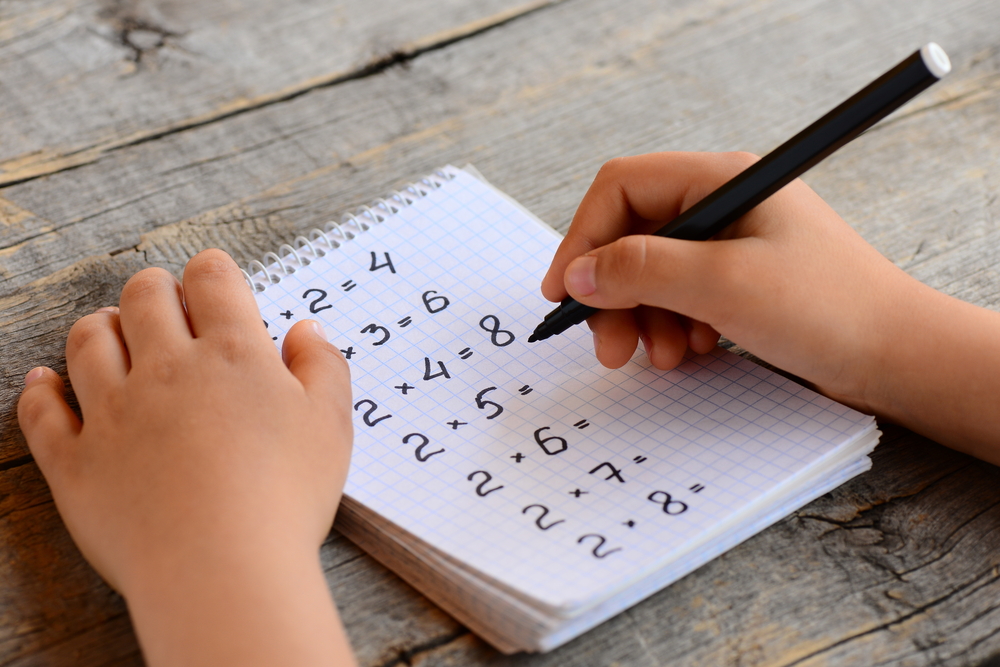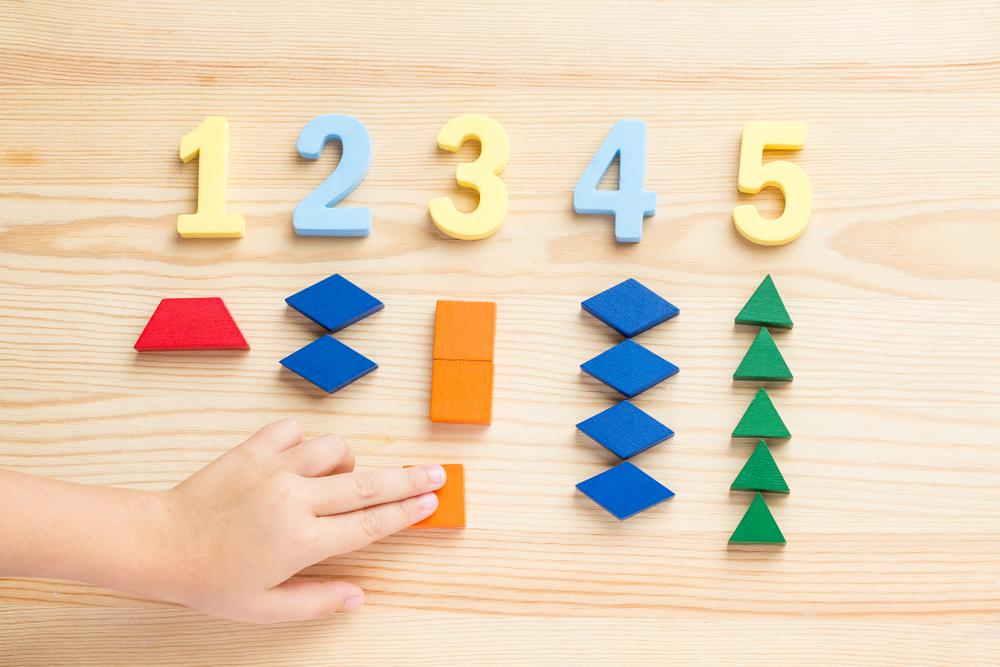Visual perception Addition & Subtraction Worksheets for 5-Year-Olds
14 filtered results
-
From - To
Enhance your child's learning experience with our Visual Perception Addition & Subtraction Worksheets designed specifically for 5-year-olds. These engaging worksheets aim to improve visual skills such as shape recognition, pattern understanding, and spatial awareness while building essential math skills. As children work through fun and interactive activities, they will practice simple addition and subtraction problems, reinforcing their understanding of numbers and concepts. Printable and easily accessible, these worksheets provide a valuable resource for parents and educators looking to support young learners in developing critical thinking and problem-solving skills. Make math exciting and enjoyable with our visual perception worksheets today!
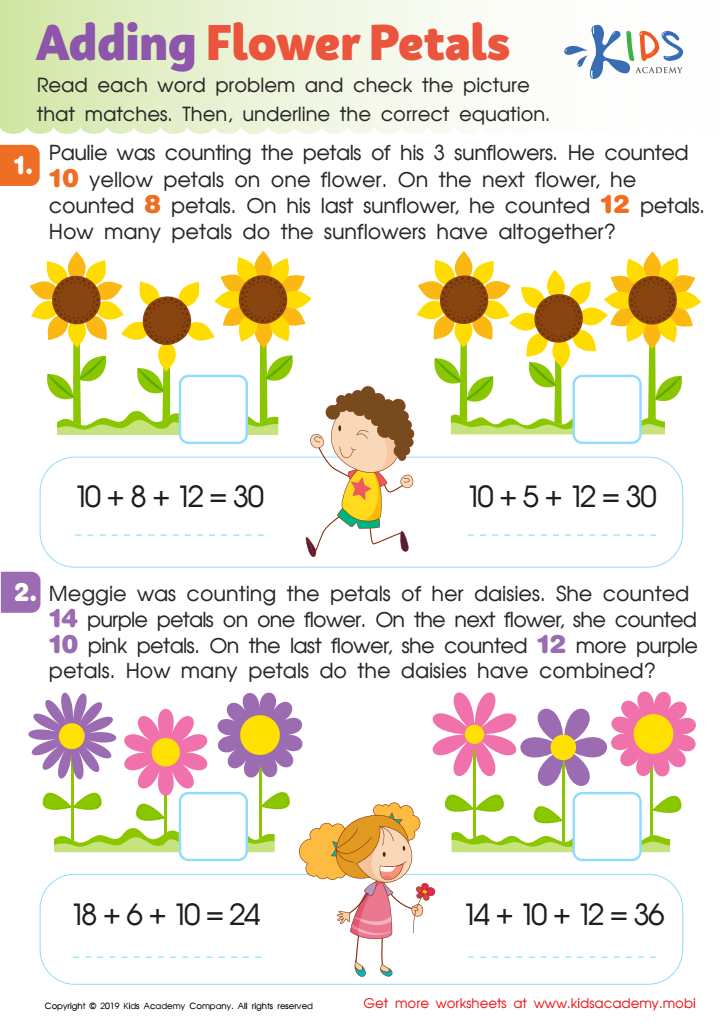

Adding Flower Petals Worksheet
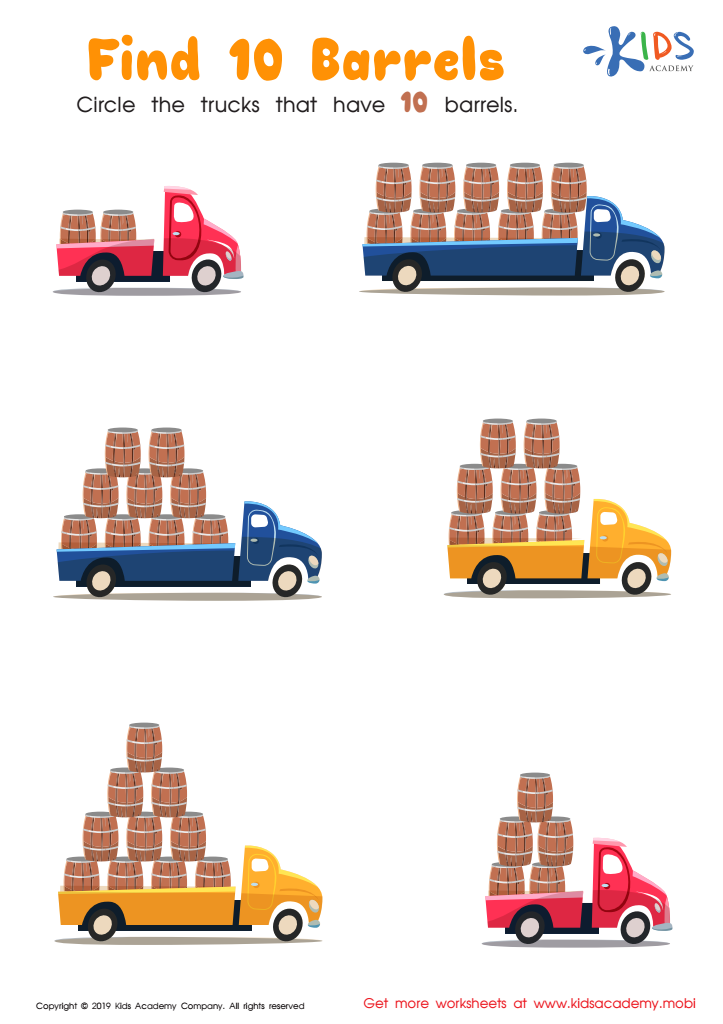

Find 10 Barrels Worksheet
Visual perception skills are crucial for young children as they serve as the foundation for learning essential math concepts, including addition and subtraction. For 5-year-olds, developing these skills can significantly enhance their ability to understand numerical relationships and solve problems. When children can visually perceive quantities and spatial relationships, they are better equipped to grasp the concepts of "more," "less," and "equal."
Furthermore, visual perception impacts a child's ability to follow directions, recognize patterns, and identify shapes—skills that are interconnected with early mathematics. As addition and subtraction require not only counting but also the visualization of numbers, such as grouping and separating objects, strong visual perception aids in simplifying these concepts. Engaging in activities that promote visual perception—such as sorting, puzzles, or matching games—can effectively reinforce these math fundamentals.
Parents and teachers should prioritize these skills because they promote critical thinking and problem-solving abilities essential for academic success. Additionally, fostering a positive attitude towards math at an early age sets the stage for lifelong learning and confidence in one's abilities. By supporting the development of visual perception, caregivers and educators will help build a strong mathematical foundation for children, making future learning more accessible and enjoyable.
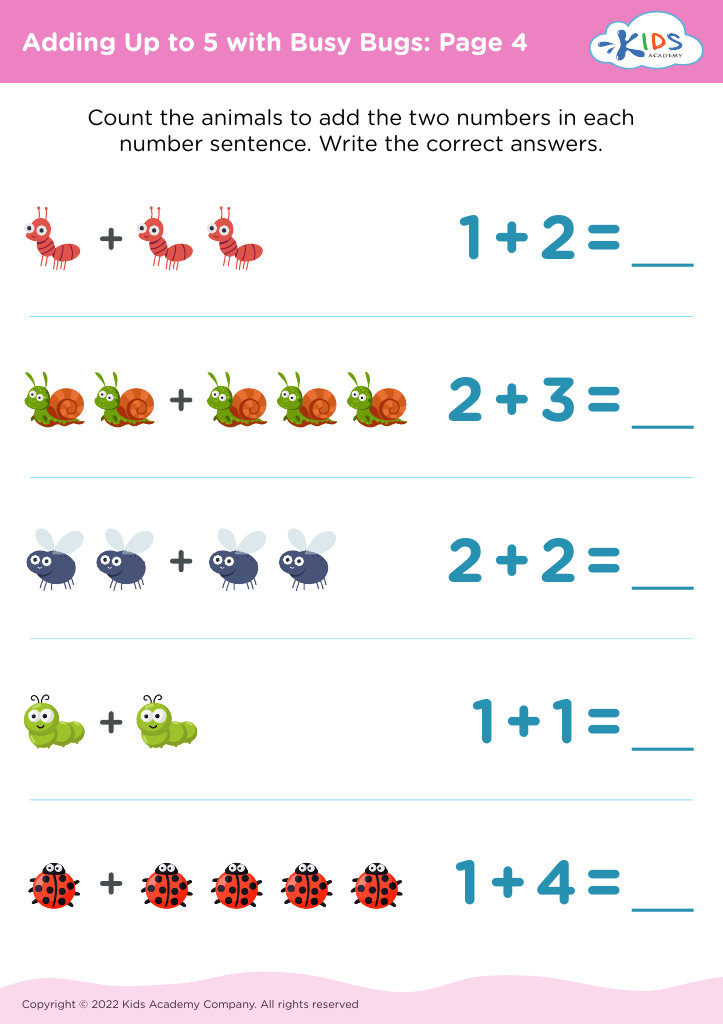
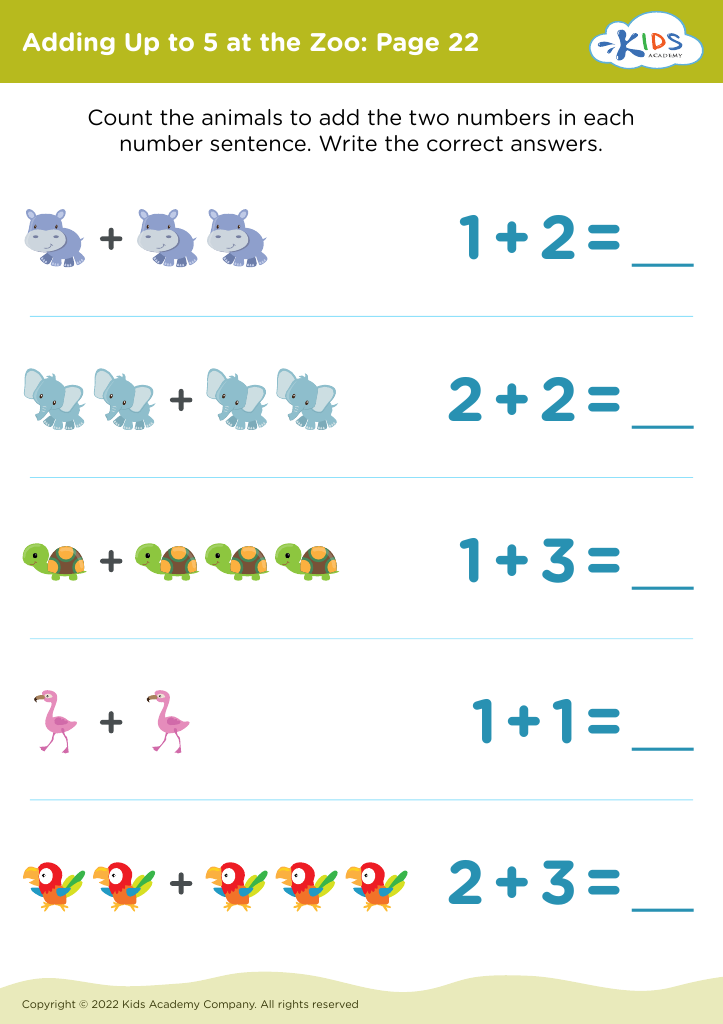


 Assign to My Students
Assign to My Students
